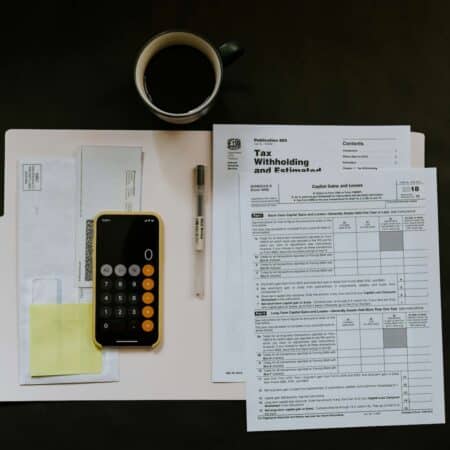Pay As You Go Installment Explained
The tax implications of owning a business are many and keeping track of what you owe and why can be hard. Understanding notional tax and pay as you go (PAYG) instalments becomes even more critical when you’re growing and your structure is evolving, with tax requirements evolving alongside it.
There are two ways to pay business tax: in one lump sum at the EOFY, or in pay-as-you-go instalments across the year so you don’t end up with a large amount in one go. The ATO uses notional tax calculations to determine your instalments.
The ATO will either automatically opt you in for PAYGI, or your accountant will do so on your behalf before this happens. Here’s what you need to know…

What is a Pay As You Go Installment (PAYGI)?
- They are quarterly prepayments of the tax on your business income according to your predicted tax bill
- The installments avoid one big bill at the end of the year, which people often don’t have the money to pay
- This is different to PAYG withholding, which is the tax employers deduct from payments to their employees. An important distinction!
How Do You Enter PAYGI?
- It can happen automatically via the ATO according to your latest tax return
- If you’re an individual (sole trader) or trust, you’ll automatically find yourself entering PAYGI if:
- installment income from your latest tax return is $4,000 or more
- tax payable on your latest notice of assessment of $1,000 or more, and
- estimated notional tax (according to notional tax ATO calculations) of $500 or more
- Sometimes, accountants will make the decision to enter you into PAYGI before it’s enforced by the ATO because…
- it’s a great way to manage cashflow
- big bills to pay in one hit is often unachievable
- they know you struggle to manage your cash flow and you aren’t putting enough aside for tax
- it’s often a good way of avoiding payment plans (which don’t look great on your credit rating)
How to Calculate Notional Tax
Your notional tax is calculated by the ATO based on your most recent tax return. Here’s the process:
- The ATO notional tax calculation uses your total assessable income from the previous year
- It applies the relevant tax rates to estimate what you’ll owe this year
- This estimate determines your quarterly pay as you go instalment amounts
- Your accountant can help you understand how to calculate notional tax for your specific situation
Do I have to pay notional tax? If you meet the PAYGI entry thresholds mentioned above, yes – the ATO will use notional tax estimates to set your instalments. However, you can vary your instalments if your income changes significantly.
What happens once you’re on PAYGI?
You’ll make regular pay as you go payments throughout the year, based on your business and investment income (basically the ATO’s notional tax estimate of how much tax you’ll owe).
At the end of the financial year, those payments are totalled and minused off your final tax bill. Ideally you’ll have little to nothing left to pay.
Questions? Concerns? You know where to find us.
FAQ
What is Notional Tax?
Notional tax is a calculated estimate of the tax you’ll owe for the year, based on your previous income and tax history. The ATO uses this figure to work out how much you should pay in PAYG instalments. It’s like pre-paying your tax in chunks throughout the year.
How does the ATO calculate notional tax for PAYG instalments?
The ATO calculates notional tax by looking at your previous year’s tax return. They take your total taxable income, apply the current tax rates, and use that figure to estimate what you’ll owe this year. This becomes the basis for your quarterly pay as you go instalment amounts.
Can I reduce my PAYG instalments if my notional tax estimate is too high?
Yes, you can vary your pay as you go instalments if you believe the ATO’s notional tax calculation doesn’t reflect your current income. Simply lodge a variation through your tax agent or the ATO portal. Just be careful – if you underestimate, you might face interest charges.
What’s the difference between notional tax and actual tax payable?
Notional tax is the ATO’s estimate of what you’ll owe, while actual tax payable is what you truly owe at the end of the financial year. Your pay as you go instalments are based on notional tax, and any difference is settled when you lodge your tax return.
Do sole traders have to pay notional tax differently to companies?
The concept of notional tax applies to both sole traders and companies, but the entry thresholds differ. Sole traders enter the PAYG system when their notional tax hits $500 or more, while companies have different criteria. The pay as you go payment process is similar once you’re in the system.
Where can I find my notional tax amount from the ATO?
Your notional tax figure appears on your PAYG instalment notice from the ATO, usually sent quarterly. You can also view it through your ATO online services via myGov. This ATO notional tax calculation determines how much you need to pay in each pay as you go instalment period.













